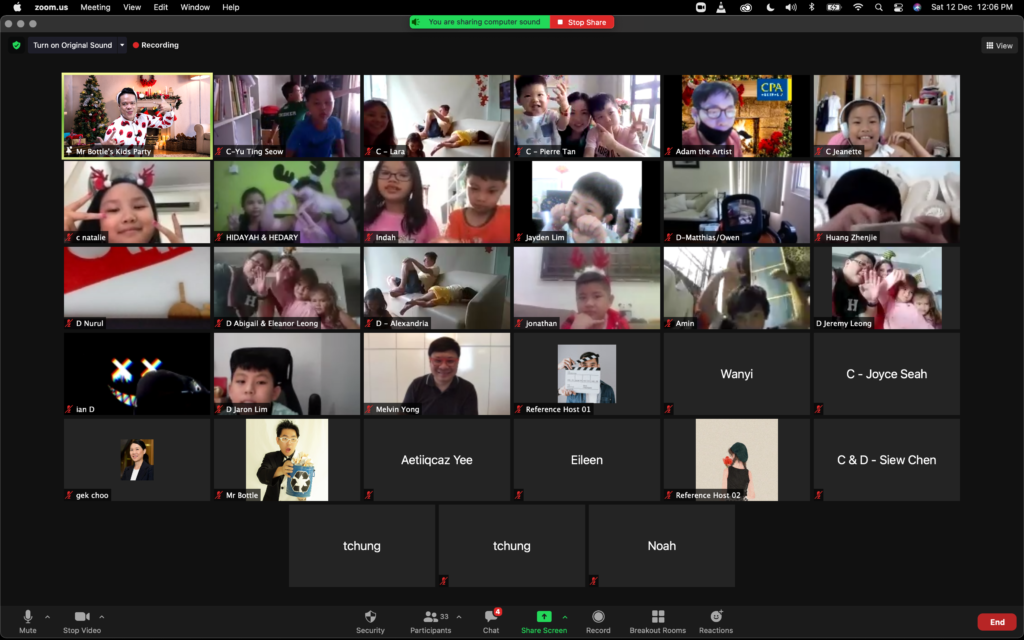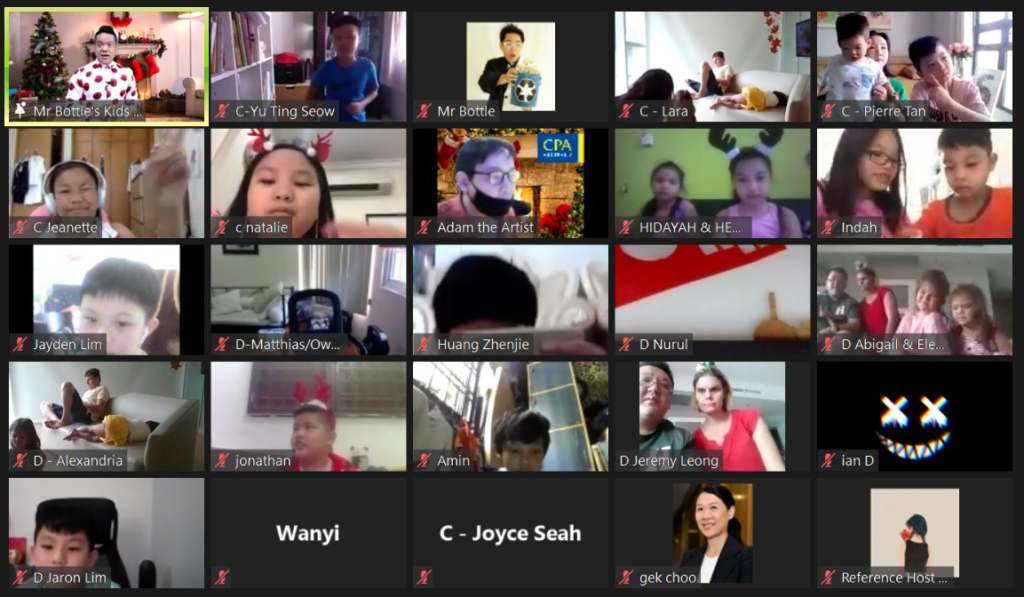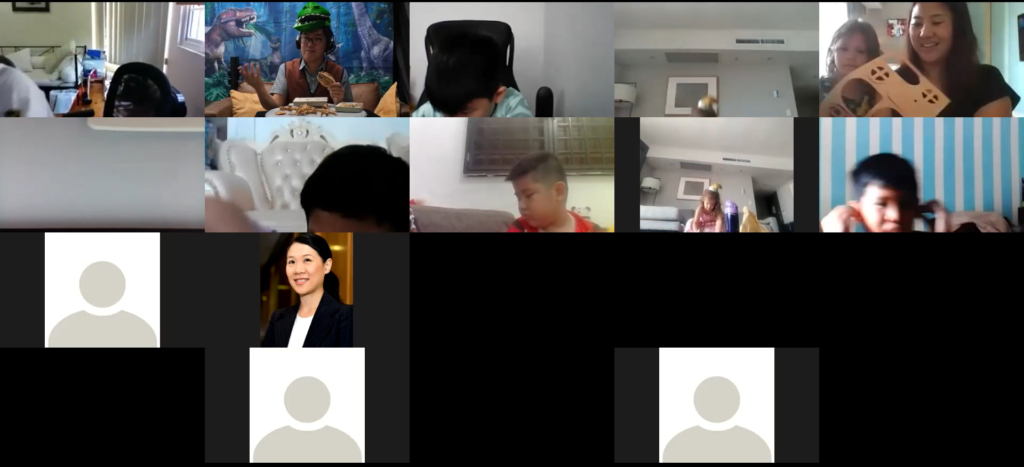Have you heard of virtual family day?
In the past several months, many cancelled events, from birthday parties to club events, kids@work to family days, have been replaced by virtual ones.
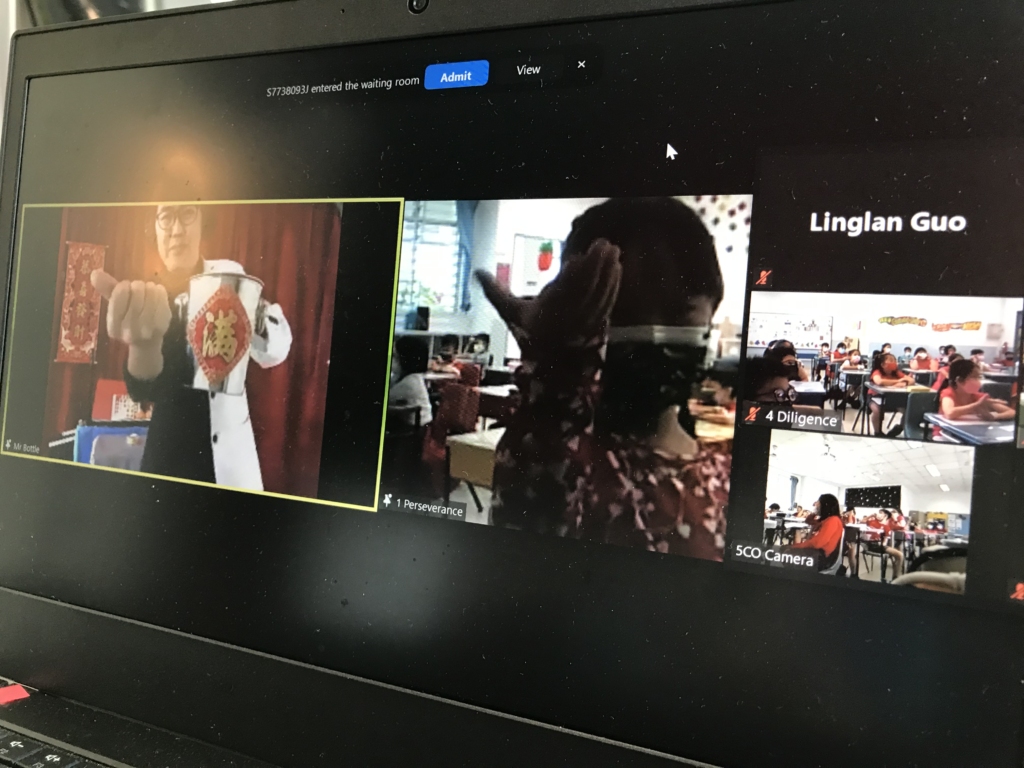
virtual magic show via zoom 
virtual magic show for family day
A lot of companies did not know that it is possible to have a virtual family day. A virtual event, though has its shortcoming actually brings benefits of its own. (It’s a bit of an oxymoron when you think about it.)
So how do you make your event a success? In this article, we gather our experience as well as from other event companies.
1. Wider Reach – Where & When
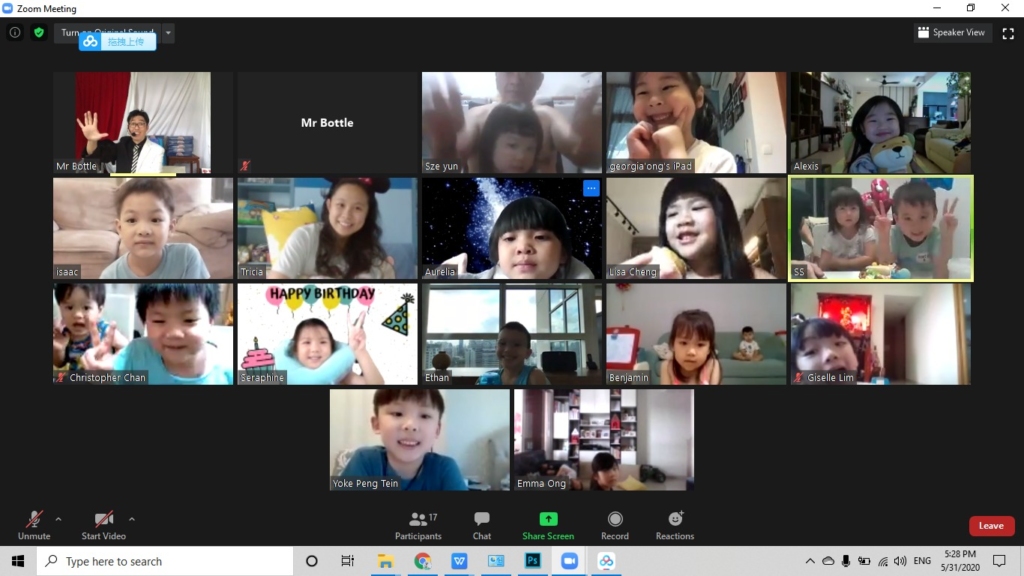
zoom-party 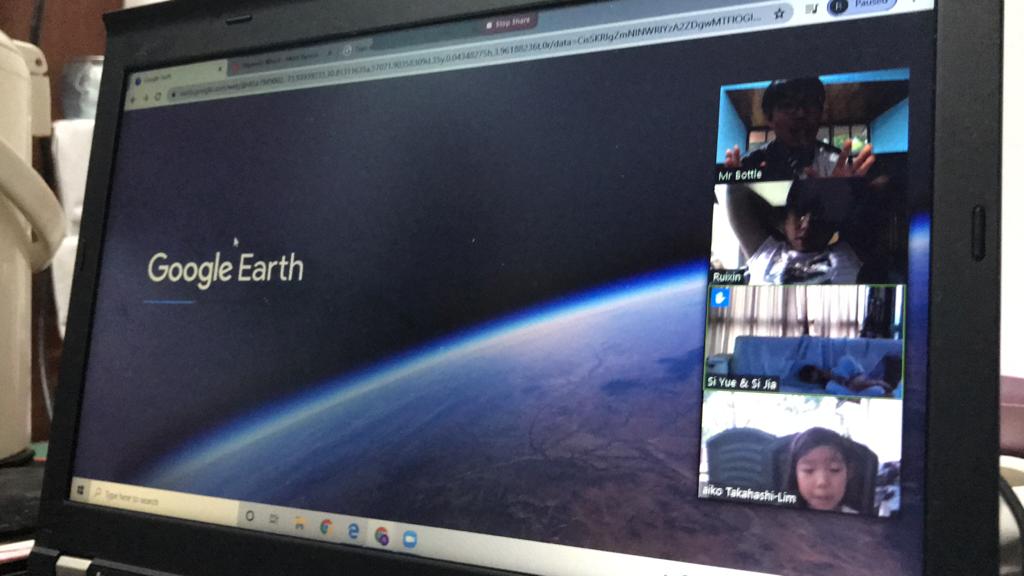
zoom tour
A typical family day usually involves only families within its own country since not every company will have the budget to fly families in to celebrate. It is also not practical given the schedule for your spouse or school going children in different countries.
With a virtual event, there is no barrier to attendance, other than internet access. Those who couldn’t otherwise take time off to travel as a family, be away from their home country or have mobility concerns, can now attend.
Why not take this chance to introduce colleagues from overseas to each other’s families and get to know each other.
You do need to take note of when you are having such an event:
- Time Differences – It may be challenging to find a date and time that matches everyone’s schedule. For instance, at a recent virtual family day for STB, we remembered that Dubai’s weekend is a Friday and Saturday so we have to avoid those days.
- Cultural Difference – Having Mr Bottle’s Kids Party in Taiwan and China, we realised how virtual event is such a foreign word to them! Though the culture of having live broadcast is common in those countries, it has not extrapolated into events. But on that note, event managers can change this live broadcast concept into an advantage in their events if they are targeting the Greater China audience.
- More People – On the virtual platform, you can now accommodate more people and no limitation on the venue capacity.
- Other Considerations – Also, think carefully about when your event starts. For instance, if you organise an event too close to lunch or bedtime could summon the wrath of a small child, so give enough time on either side of lunchtime to allow people to be settled into their work. Even the schedule of children in Singapore is very challenging.
2. Get the duration right
How long should your event last? A family day is different from a webinar or a corporate event.
It also depends on the interest level. You should soon get a feel for how long your audience’s attention will last. Dealing with kids, you definitely want to:
- keep your event short and sweet; probably 2 hours is the maximum I will recommend,
- break up your event into bite-size, fitting the interest of different interest groups,
- vary the offering of your entertainment.
Keep individual sessions, like games and magic show, concise. For shows like these, anything more than 30min could be a bit of a drag. The maximum duration is around 45-60min for anything hands-on like craft workshops. Looking at a computer screen isn’t the same as seeing someone in person, so take attention spans into consideration.
3. Make it Relevant
Knowing your target group matters.
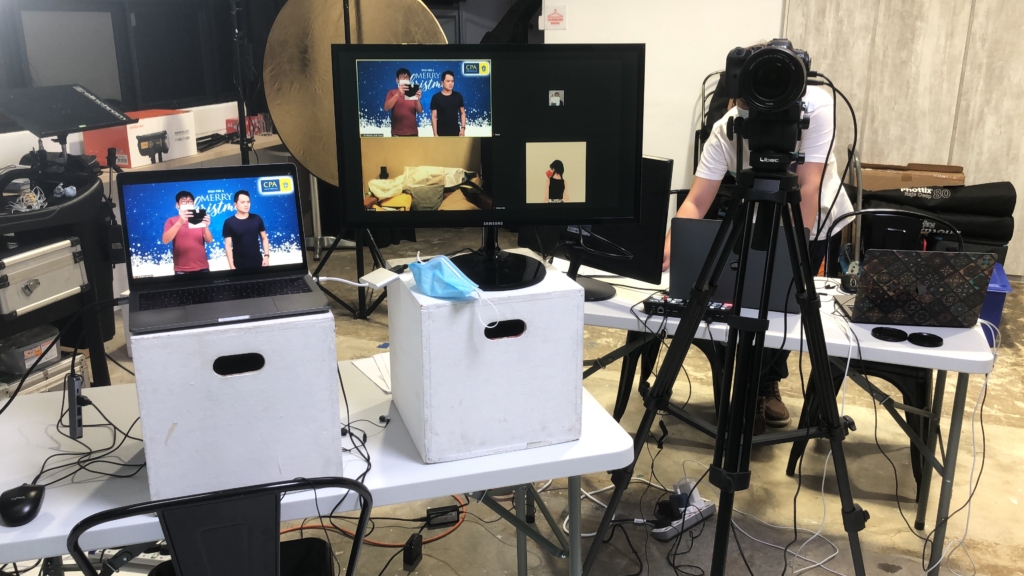
behind the scene of a virtual family day 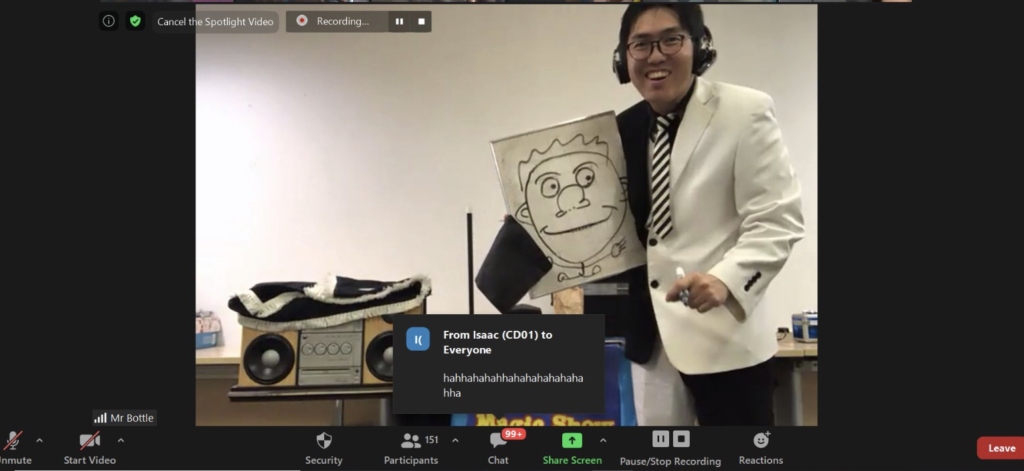
Virtual magic show
Dealing with children is very different. Kids who are 6-8 years old think very differently from 10-12. If you want to involve families with elderlies or those without kids, then this complicates the event planning further.
When we organised our online family event, which replaced a face-to-face event, not all content is applicable. A lot of testing is needed because different target groups react differently to virtual entertainment & activities.
Have the right mix of activities to target your audience is important. Come up with a theme that is relevant to your company, your target group and your objectives.
4. Differentiate your family day

christmas family event 
christmas family event
Virtual family events open up a whole new door of possibility.
You can have Las Vegas magicians join you for your event. You can have celebrities interacting with the audience from the comfort of their own homes.
Your audience can travel to another country without flying. See animals up close and personal. Have a dinosaur expert show you fossils.

Kahoots is just an example a software you can use to improve interactivity as a family and between colleagues.
Sky is the limit.
5. Choose your platform wisely
When it comes to software, you’re spoiled for choice in terms of what to use to host your virtual event, we have seen so many different types like teams, zoom and even interchange software. How do you choose between them?
- What devices are your colleagues most likely to be used? Not all solutions play that well on mobiles or different types of devices.
- If you were to split up the groups (eg. kids in a smaller room, and adults in another), does each family has enough resources to do that?
My personal preference is Zoom because a lot of Singaporeans already have the App installed on the laptop and mobile phone. The software also has a lot of the required functions like spotlight, polls and chat. (eg. webex doesn’t have this function.) Adults and kids are familiar with it so reducing the need to relearn how to operate it.
But of course, Zoom is not a broadcasting software so there are limitations but this can be enhanced using 3rd party software to add information bar, titles, graphics, etc, like what you would see on TV.
Lastly, companies can consider broadcasting their zoom event at a studio. This will highly enhance the broadcast quality and give your colleagues a better viewing environment.
6. Consider an event company
Because of Zoom, some of the companies may think that it is easier to-do-it-themselves. I agree if you are just engaging 1 activity.
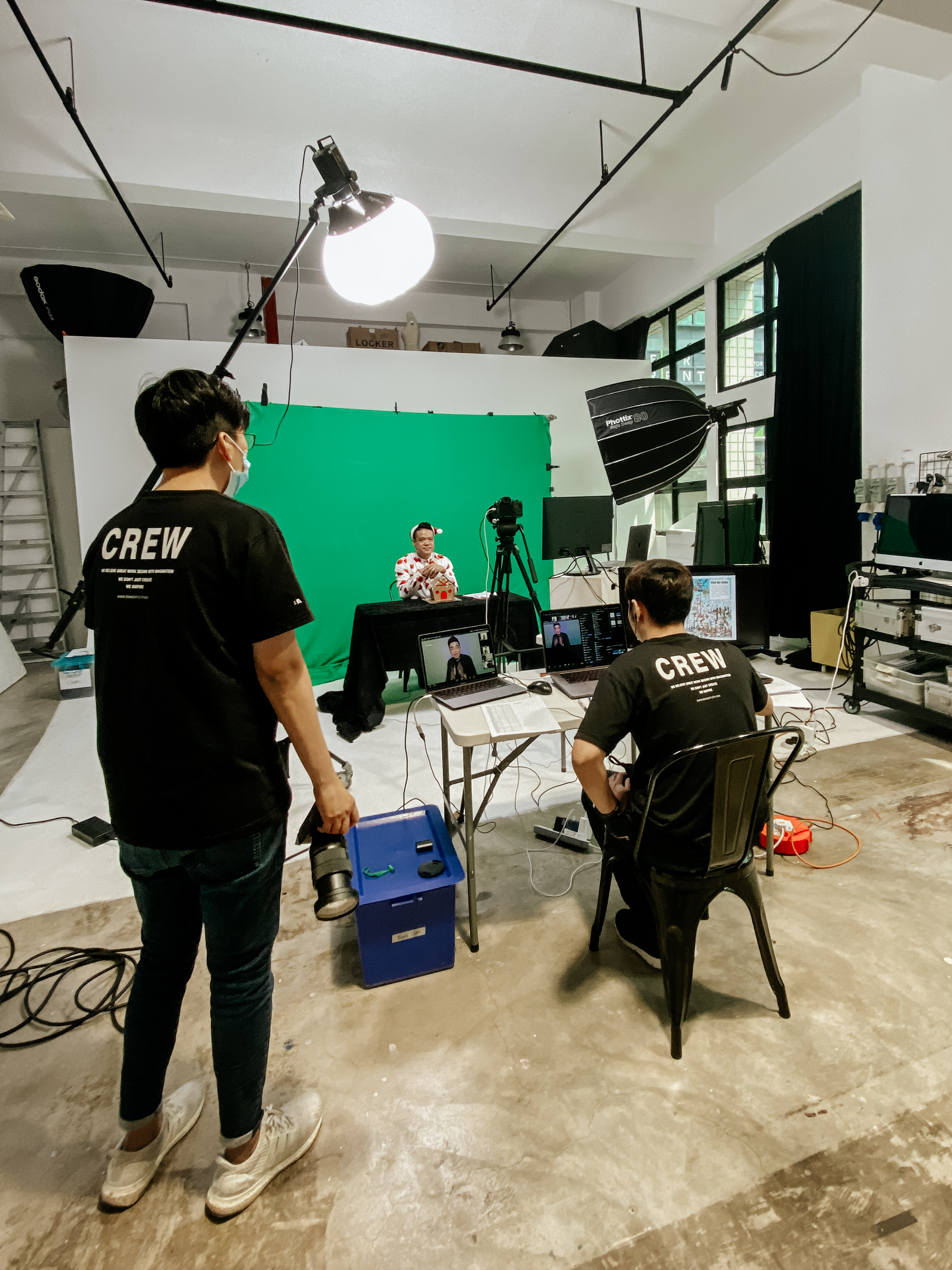
virtual family day at a studio 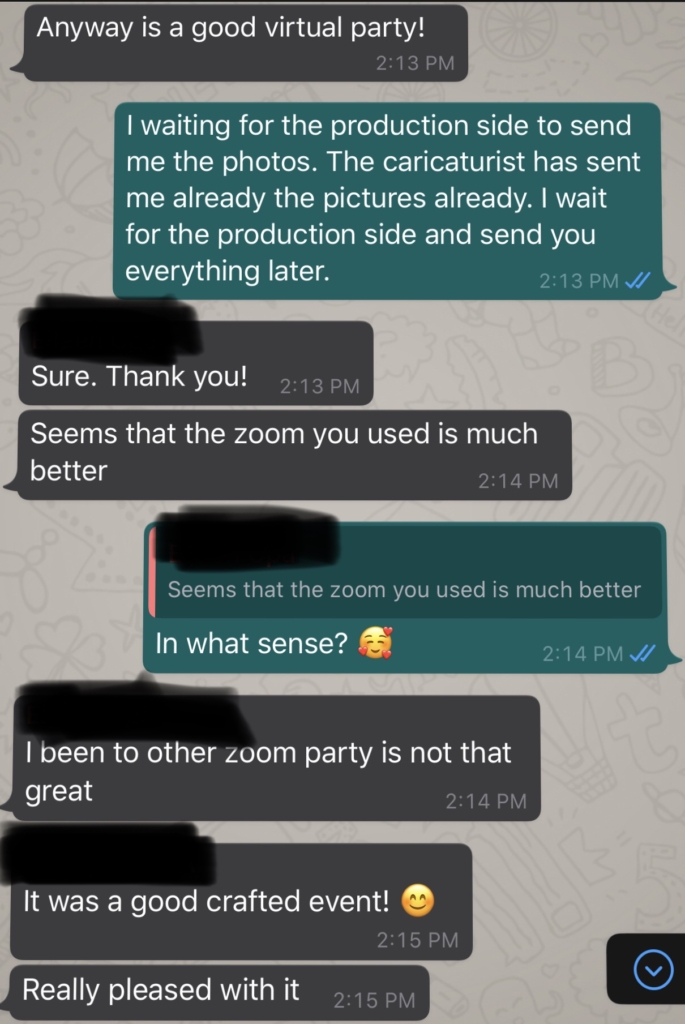
Comments from client
If not, you may find it’s worth paying for an event company that has experience organising virtual family days before. This will take the stress over the technical parts of your virtual event for you and give your event a professional look and feel.
An experienced company will also know what to do when something happened. For instance, during a virtual magic show, the magician was disconnected twice due to his network problem at home. We quickly switched the screen back to the emcee and continued with the activities until the problem was solved.
7. Make Your Virtual Family Day interactive
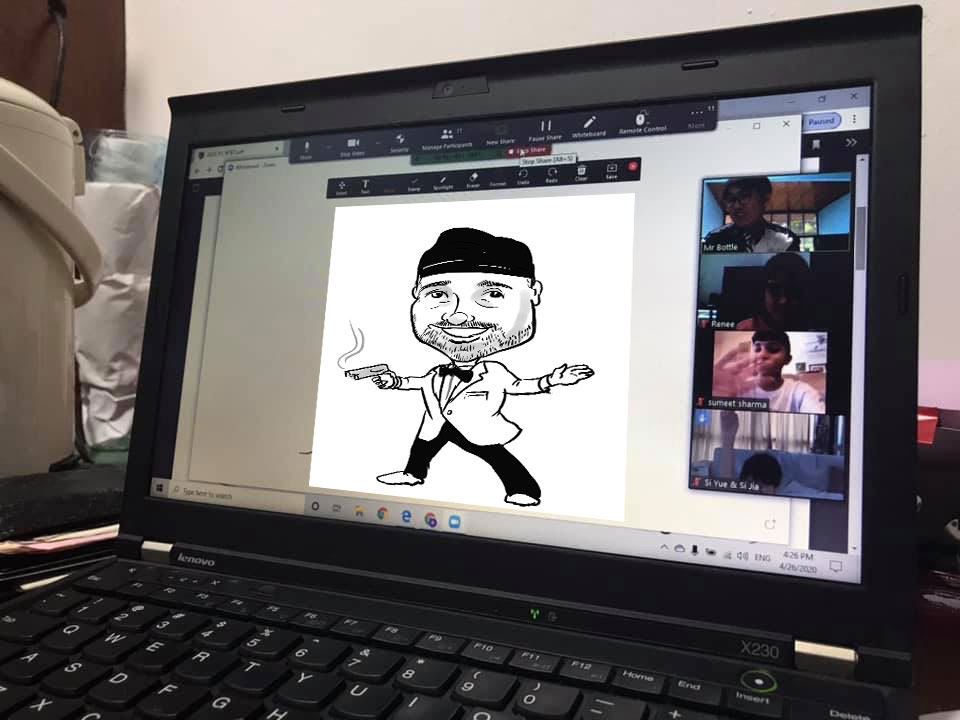
zoom caricature online 
online magic show via zoom
If all you do is stream content in one direction, there’s no real incentive for people to keep watching, so you need to find ways to make people involved and engaged.
Find a virtual magic show which is interactive. Get an emcee who is engaging online and familiar with the virtual platforms.
Staring at the screen for a long time can also create fatigue. You can include off-line activities in combination with online ones to vary the pace.
For instance, we have created a treasure hunt in which families still go outdoor and can play at their own pace, without gathering in big groups. They can share the pictures taken during the hunt to increase interactivity with their colleagues and friends creating a different level of interactivity.
8. Remind people that the virtual family day happening
There is so much distraction in the virtual world. It’s easy for people to forget they’ve signed up for one. That is also why the drop out rate of virtual events are rather high.
Due to PDPA, this task may fall onto the responsibility of staff in charge of the event but don’t miss out on this important part of the event.
09. Expect technical challenges

Technical problems are the bane of every virtual event, and they’re only more likely to occur at the current time, with unprecedented demands on the broadband network. Glitches are always likely to happen, so be prepared.
Always be prepared. Wifi is also famously temperamental. Have 4G from your mobile as a backup. Connect your laptop via cables to reduce falters.
Don’t assume that everyone attending the event are well-versed in the platform you are using; this may be the very first time they’ve used it.
For example, turn on the option of ‘muting’ participant upon joining. Imagine if everyone enters the room with background noise, overshadowing the emcee’s speech – eventually the audience will give up and stop concentrating.

